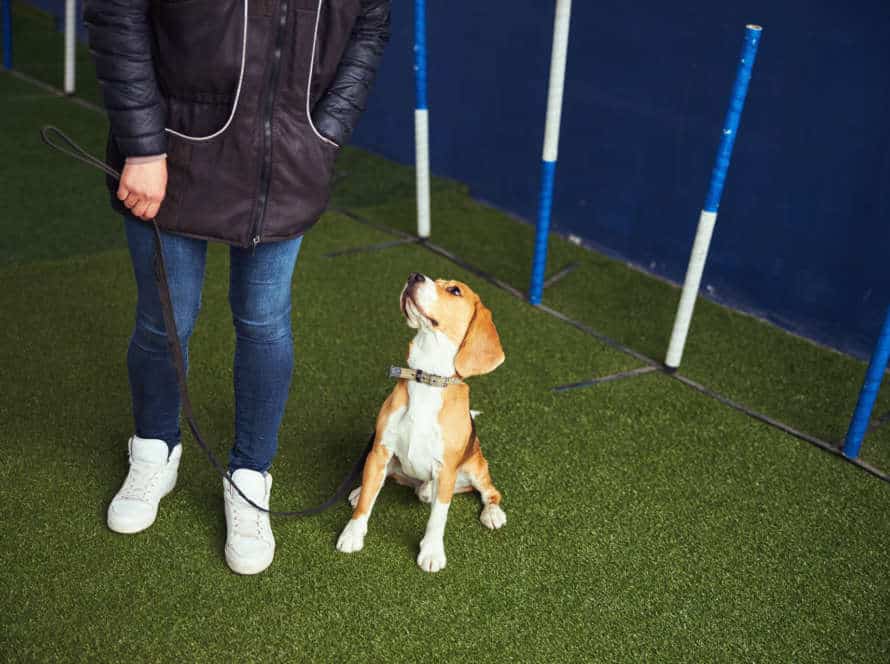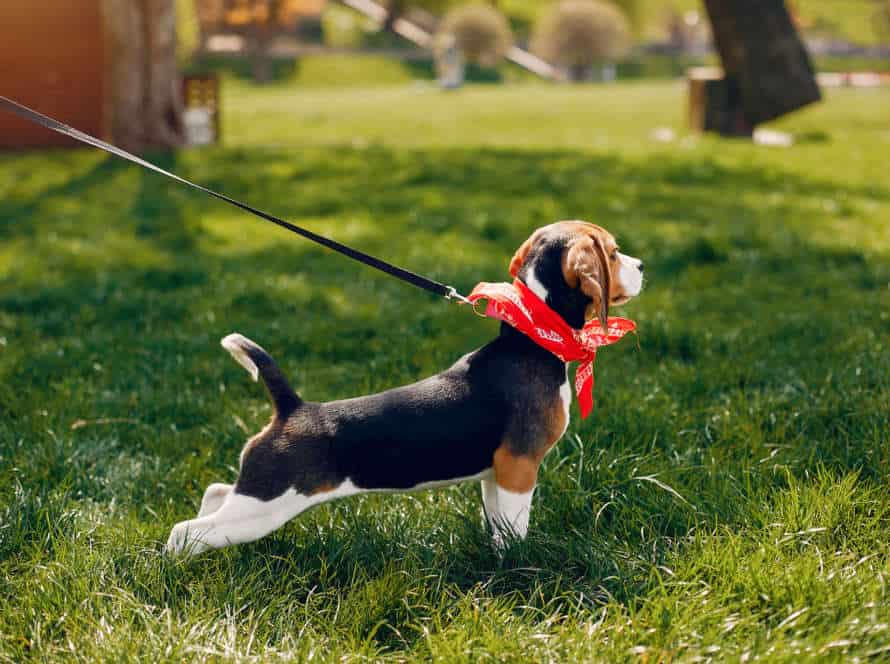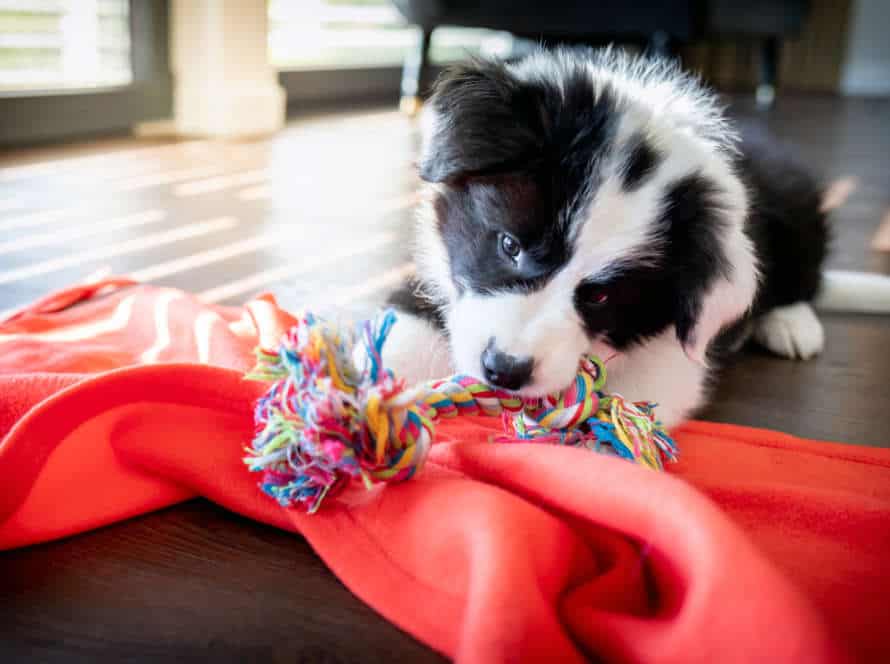The Long Line: A Valuable Tool for Training Your Dog’s Recall
The long line is a great help for dog owners who want to train their pooch better. It’s a long leash that lets your pup roam freely, all while being in your control. Here’s how to do it:
- Choose a safe and peaceful place.
- Connect the long line to your dog’s collar or harness and hold the end.
- Let your dog explore the area while they’re free.
- When you’re ready, use a pleasant tone and call their name followed by commands like “come” or “here”.
- If they answer properly, give them treats or praise as reward.
- If they don’t respond, gently pull the leash to bring them back.
- Don’t use the long line to punish or restrain your dog.
- Consistency and patience are essential when training your dog’s recall.
- So, practice regularly with the long line until they obey reliably.
The Benefits of Using a Long Line for Recall Training
The long line: an incredible tool! It provides a good balance between leash control and freedom. This way, you can maintain a safe distance while your dog enjoys exploring. Let’s explore the advantages of using a long line for recall training.
The Long Line Allows For More Freedom and Safety
A long line for recall training offers many advantages! It can upgrade your pup’s recall aptitudes, give them more opportunity, and keep them safe.
Here’s some upside of using a long line for recall training:
- Freedom: Your dog can have more space to explore, still controlled by you.
- Safety: The line keeps your pup away from dangerous areas like roads.
- Flexibility: You can adjust the rope’s length as you need. Indoor and outdoor training possible.
- Enhanced recall: A long line helps your dog master recall, even in distracting conditions.
Using a long line for recall training, with supervision, can be very helpful for your pup!
The Long Line Provides More Control During Training
The long line is a great way to train your pup’s recall. Control during instruction is increased and helps build a stronger connection between you and your pup. Here are some advantages of using a long line for recall training:
- Freedom and Control: You can keep control over your pup’s movements while they explore. You can also increase the distance between you two while still keeping them in check.
- Safety: A long line ensures your pup’s protection by preventing them from running off or getting into dangerous situations.
- Trust: Long line training creates trust by giving the pup the liberty to explore while also building a strong bond between the two of you.
Remember to use the long line carefully to avoid tangles, jerks, or harming your pup. Regular practice sessions with a long line can help recall and other behaviors.
The Long Line Can Be Used for Distance Training
A long line is great for distance training to boost your dog’s recall. It provides a physical connection and allows for movement with control and safety.
Benefits:
- Your dog has more freedom to explore and exercise while practicing recall.
- A long line keeps your dog from running away or getting into trouble.
- It helps with training consistency and reinforcement.
Pro-tip: Keep the long line taut for better control. Use positive reinforcement when training.
Choosing the Right Long Line and Equipment for Training
A long line is a must when teaching your pup a reliable recall. It’s a great tool for practicing off-leash and can be a safe way to do it. Yet, there are some things to consider when choosing the right long line. In this section, we’ll look into different types of long lines, the pieces they come with, and how to pick the most suitable equipment for your furry friend’s training.
Length of the Long Line
When selecting a line length for recall training, consider both your pup’s size and the environment. A 50-ft line is best for larger dogs and open outdoor areas. This will give them more freedom but you can still be in control. For tinier dogs or when training in tighter spaces, a 15-20 ft line is better. That gives your pup enough space to explore.
No matter the line length, use proper equipment – like a strong, lightweight leash made of durable material. This’ll ensure the safety and comfort of both you and your pup during training.
Material of the Long Line
The long line’s material is key when selecting the right one and equipment for training your pup’s recall.
Nylon can be a good choice, as it’s strong, durable, and easy to clean. Plus, it’s lightweight – making it great for small dogs and puppies.
Leather is another option; it’s durable and comfortable to handle. It also gives good grip and control – perfect for large and strong dogs.
Biothane is like leather; it’s durable and offers grip. It’s also water-resistant and simple to clean – great for wet or muddy conditions.
Rope long lines are lightweight and durable. They offer better grip and control – making them a great choice for active dogs.
No matter the material, make sure it’s the right size and strength for your pup. Use it responsibly and safely during training.
Choosing a Harness or Collar for Training
Choosing a harness or collar for training your pup depends on lots of things, such as breed, size, and temperament. A harness is great for dogs that pull and are hard to control. There are different kinds of collars: flat, martingale, choke, and prong. Long line training needs the right equipment. A long line is attached to the collar or harness so your pup can roam while you watch. It helps with the recall training and keeping control during walks or outdoor activities.
Pro Tip: Ask a professional trainer or vet to decide the best harness or collar for your pup’s training.
Safety Tips for Long Line Training
Long line training is effective for teaching your pup recall. However, it can be risky without safety precautions. The right equipment, a safe environment, and monitoring your dog’s physical and mental state are key to using long lines safely. Here’s a guide on how to train your pup to recall using a long line… safely!
Begin with Short Sessions in a Safe Area
Long Line Training is a powerful tool to boost your dog’s recall and obedience. It is essential to start with short sessions in a safe area for your pup’s safety and to avoid accidents. Follow these safety tips for long line training:
- Choose the right equipment – get a long line suitable for the size and weight of your dog. Not too long, heavy or thin. Use a secure harness and collar to stop your pup from slipping out.
- Start small – practice in a small, distraction-free area like no other dogs, people or wildlife.
- Gradually increase the distance – when your pup is comfy with the long line, slowly increase the distance and add distractions as they become more obedient and confident.
- Set realistic goals – be aware that every dog is different and progress may take time. Stay consistent and reward good behaviour with positive reinforcement.
These tips will help you use the long line effectively to train your dog’s recall and better their obedience.
Pro-tip: Supervise your pup during long line training and be aware of any signs of distress.
Always Monitor Your Dog and the Long Line
Doing long line training with your pup? Essential to keep an eye on them. Here are some safety tips:
- Use a lightweight but strong line that won’t break.
- Never leave unsupervised. Always be able to see and hear.
- Start in quiet, controlled places like a fenced yard.
- Avoid using a long line in crowded or public places.
- Gradually increase length as pup becomes more comfortable.
- Always reward good behavior with treats or positive reinforcement.
- Pro-tip: Use long line for training only, not as permanent leash. Helps pup know when it’s training time vs free time.”
Avoid Using the Long Line Near Obstacles or Dangerous Areas
When training your dog with a long line, it’s important to keep them safe. Avoid using it near obstacles like trees, rocks or fences which can cause tangles. And keep away from dangerous areas, such as busy roads, water or cliffs.
Here are some tips:
- Always watch your dog closely and use a line that suits their size and weight.
- Choose an open, safe area – such as a fenced yard or park with few obstacles or disturbances.
- Don’t use a line that is too long – it can become a hazard.
- Train in recall and obedience before long line training to keep away from hazardous areas.
- Use the line responsibly – train in a safe environment.
Techniques for Effective Long Line Training
Long-line training can be great for training and improving your pup’s recall. A long-line serves as a visual and physical reminder: your dog should stay within range and come when called. Introducing it helps teach your dog boundaries and recall, while also letting them explore further. This article will discuss various techniques for successful long-line training.
Start with Basic Recall Training
When training your pup, it’s very important to start with basic recall. This command is one of the most essential ones a dog should know. Utilize a long line to reinforce and improve recall training. Here are some tips for successful long line training:
- Secure a 30-50 foot long line to your pup’s collar or harness.
- Use treats or toys as motivation when calling your pup back to you.
- Increase the length of the line when your pup is comfortable.
- Reward good behavior and ignore bad behavior – only give a firm “No” if your pup misbehaves.
Pro tip: Use a low-distraction environment such as an enclosed yard or park to get the most out of long line training, before taking on more complex situations.
Gradually Increase Distance and Distractions
Long line training is great for recall and control while off-leash. It’s important to gradually increase distance and distractions during training. Here are some tips:
- Start with a short lead and gradually increase the distance as your dog gets more comfortable with commands.
- Train in a quiet environment with no distractions. Then, add distractions like other dogs, people and new environments.
- Use positive reinforcement, treats and praise to reward good behavior and commands.
- Keep training sessions short and fun. Patience is key! The goal is to transition to off-leash environments.
Pro tip: Use a long line that’s comfortable for you and your dog. Avoid excessive tension or pulling, as it can cause injury!
Reward Your Dog for Good Behavior During Training
Rewarding your pup is key to motivating them and making training sessions more effective! Here are some tips:
- Use treats they love, but don’t get often.
- Reinforce good behavior with praise, petting, and playtime.
- Use a clicker to mark desirable behavior.
- Say a verbal command like “Good boy!” with the reward.
- Treat-dispensing toys and puzzles give mental stimulation.
- Long line training is great for the recall command. The long line (30-50 feet leash) gives freedom while keeping them controlled. Pro Tip: Long line training should be done in safe, enclosed areas like a dog park or fenced-in yard.
Troubleshooting Common Issues During Long Line Training
Training your pooch with a long line? Super effective for recall! But remember, like any other training regimen, there may be some hiccups. Knowing how to troubleshoot is key to developing a reliable recall. Here are some common issues that may arise when training with a long line – and how to fix them!
Your Dog Refuses to Come When Called on the Long Line
If your pup won’t come when you call on the long line during training, you must find out why. Here are some reasons:
- Distance. They may not hear or see you if you’re too far away.
- Distractions. If something else has got their attention, they won’t come.
- Lack of Motivation. If they’re not interested in a reward, they won’t come.
To fix this, try these techniques:
- Move closer to your pup so they can hear and see you better.
- Train in a quieter area with fewer distractions.
- Offer higher value rewards, or take a break for them to rest.
Keep practicing the long line recall. Eventually, your pup will respond reliably!
Your Dog is Afraid or Anxious While on the Long Line
Is your pup scared or nervous when on a lengthy leash for training? It could be from many typical causes that can be easily sorted. Here are a few tips to help you and your doggie have a better long leash training session:
- Start with shorter leashes. If your pup is hesitant of the long one, start with a short one first and slowly increase the length as they become more comfy.
- Let them have room. Do not be too close to them when they’re on the lengthy leash. This could create stress and lead to bad behavior.
- Check the fit. Make sure the long leash is appropriately fitted and not too tight or too loose on your pup.
- Positive reinforcement. Use positive reinforcement like treats or verbal compliments to motivate the conduct you want from your pup.
If you take care of these usual issues and use positive reinforcement techniques, you can aid your pup feel more secure and at ease on the long leash during training.
Your Dog is Pulling on the Long Line or Other Equipment
If your pup pulls on the leash or other gear during training, there could be some typical problems causing this. Here are some tips to solve these issues and make long line training successful:
- Gear Issues – Make sure you have the right gear, like a fitting harness, collar, or line. The wrong gear can cause discomfort, causing your pup to pull or resist training.
- Distractions – Dogs are easily distracted, so train in a place with few distractions. Too little distraction exposure can over-stimulate your pup, leading them to pull more.
- No Engagement – Engage your pup during training by frequently rewarding good behavior with praise, treats, or toys. No engagement leads to boredom and makes your pup less responsive.
- Consistency – Consistency is essential for successful training. Keep commands and techniques consistent to help your pup learn and respond better during long line training.
By fixing these common issues, long line training can be a great way to improve your pup’s recall and behavior.
Long Line Training Tips for Specific Situations
Long line training is super important for dogs! It helps them recall from far away. Here are some tips for when you’re doing long line training. To get the best results, here’s what to do:
- Use it for difficult recall situations.
- Make sure to get the most out of each session.
Let’s start the training!
Long Line Training for Hiking or Off-Leash Activities
Long Line Training is perfect for your pup’s safety while hiking and doing off-leash activities. Plus, it works on their recall. Here are some tips:
- Hiking: Use a long leash. Clip it to a harness, not the collar.
- Recall Training: Start with a secure, distraction-free space. Gradually add distractions like toys or other dogs. Then, practice in public spaces.
- Off-leash dog parks: Use a long line to keep your pup safe & under control. Bring a lightweight, durable leash.
Pro Tip- Always supervise your pup when using a long line. Don’t leave it on them unattended, use it as a training tool.
Long Line Training for Recall in Public Areas
Long line training is a great way to teach your pooch recall in public settings. It means hooking a long line leash up to their collar, so they can move around while still being managed by you. Here are some tips for diff’rent places:
- In an open field: Use a 50-100 foot long line. Start with short distances and build it up as they get more relaxed.
- In a park: Train recall with the long line in a crowded area. Gradually add distractions, like other dogs or kids, but make sure your dog’s still under control.
- At the beach: Train recall off-leash with a long line on. This gives them freedom to roam, whilst also giving you control if necessary.
Always keep an eye on them for signs of exhaustion or heatstroke and don’t leave them alone on the long line.
Long Line Training for Reactive Dogs
Long line training is a great way to teach your pup recall, especially if they are reactive in certain situations. Here are some tips:
- Off-leash parks: Use a 20-30 foot line. You’ll have control while they explore.
- Beaches: Get a water-resistant line. It won’t get heavy in sand or water.
- Hiking: Choose a line that won’t get stuck on rocks or brush.
- Reactivity: Create distance between your pup and the trigger. But still let them explore and play. Make sure the line isn’t too heavy. And always supervise your dog.
Pro tip: Start with shorter lines and increase the length slowly, to avoid overwhelming your pup.
Frequently Asked Questions
1. What is the long line?
The long line is a training tool used to train a dog’s recall, also known as their ability to come when called.
2. How does the long line work?
The long line is a long leash, typically 25-50 feet in length, that enables a dog to explore but still be under control. The owner can use the long line to recall the dog if they start to wander too far away or get distracted.
3. What are the benefits of using a long line for recall training?
The long line allows a dog to gain more freedom while still being under control, which can help to build confidence and trust in the owner-dog relationship. It also allows the owner to gradually increase the distance between themselves and the dog as they gain more confidence in the dog’s recall ability.
4. When should I start using the long line for recall training?
The long line can be introduced at any age, but it is best to start when the dog is still a puppy and in a safe, enclosed area. Gradually increase the length of the long line as the dog gains more experience and confidence.
5. How do I train my dog to use the long line for recall?
Start by having your dog wear the long line in a safe, enclosed area and while supervised. Practice calling your dog to you while gently tugging on the line to reinforce the recall behavior. Gradually move to more open areas and longer distances as the dog becomes more comfortable and reliable.
6. Can I use a long line for other types of training?
Yes, a long line can also be used for training behaviors such as “stay” and “heel” by gently guiding the dog into the correct position and rewarding good behavior.







